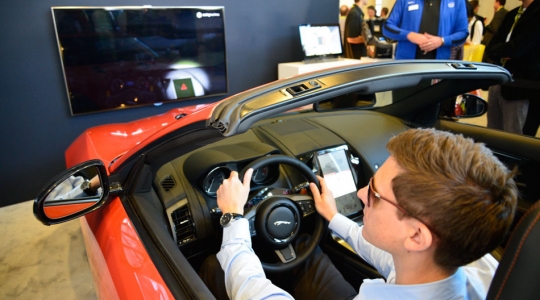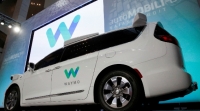When driving on a rainy night, it is an all too common problem to take a look through your car’s rear windscreen, only to find it foggy and obscured.
The issue is generally caused by the windscreen wiper cleaning the glass at intermittent or inopportune times — and Jaguar Land Rover might have a fix for that.
The company’s new patent — spotted by Gizmag — plans to use eye-tracking technology to make sure the rearview wiper is automatically responsive to driver behavior.
The system will comprise of tracking sensors that follow the eye and head movements of the driver. The sensors will activate the rear windscreen wiper when the behavior of the driver indicates they need to look through the rear windscreen.
As Jaguar’s patent notes, the current rear wiper system on most cars can be a safety hazard.
Often when the driver uses the rearview mirror to look back, the rear windscreen may not be clear because the wiper operates on a pre-programmed frequency not responsive to its environment or the habits of the person at the wheel.
This issue may lead drivers to look down and manually adjust the wiper control — something that is particularly dangerous in rain or snow, when the driver should have their eyes on the road at all times.

Image: Jaguar Land Rover
The company applied for the patent in 2013, but it was published by the U.S. Patent and Trademark Office on Tuesday.
Jaguar is investigating the use of sensing technologies in its vehicles for a variety of safety purposes. Partnering with Intel and Seeing Machines, its Driver Monitor System (DMS) was on display at CES in January. The system tracks a driver’s eyes and lets them know when they are not fixed on the road — whether from tiredness or distraction, and even if the driver is wearing sunglasses.
Dr Wolfgang Ziebart, Jaguar Land Rover Engineering Director, said in a statement on the company’s website, DMS could have a wide range of uses to help people on the road. “DMS could even enhance settings in safety systems like Autonomous Emergency Braking, to reflect the driver’s lack of attention,” he said. “As the car drives up to a hazard, the brakes could engage autonomously sooner because the car realizes the driver has not seen the danger ahead.”
Source: mashable.com











